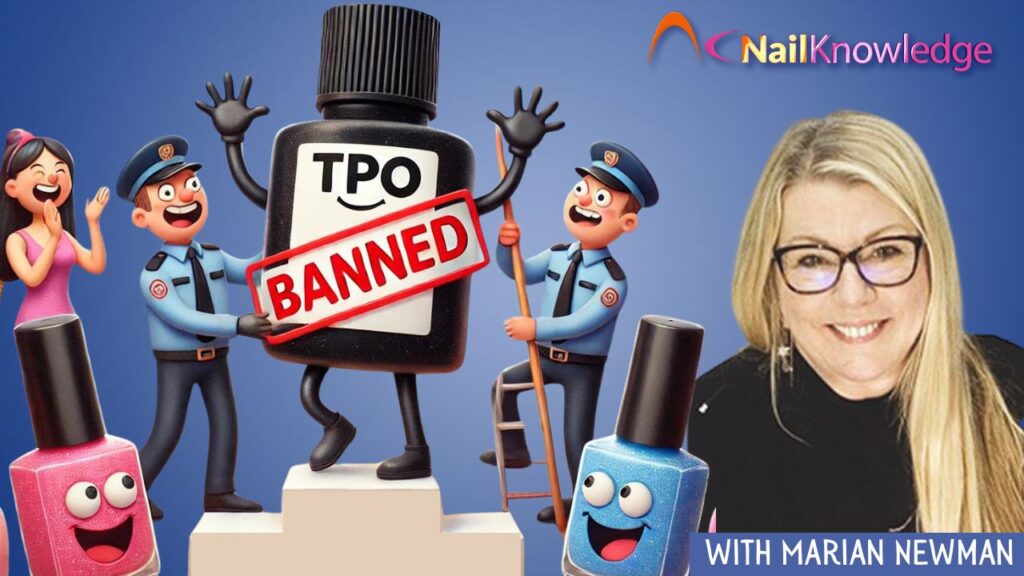You may have heard about the upcoming ban on TPO in nail coating products. But what does this mean for nail professionals?
Health Risks of TPO and the Upcoming Ban on UV-Cured Nail Coatings
TPO, short for Trimethylbenzoyl Diphenylphosphine Oxide, is a photo initiator commonly used in UV-cured nail coatings. However, the European Commission has classified TPO as a potential health hazard if present in the body in sufficient quantities.
Starting in September 2025, it will be illegal to include this ingredient in cosmetic nail products across Europe, with the UK expected to implement a similar ban by late 2026. This ban applies to the manufacture and sale of new products, not to the use of existing ones.
Reformulation Efforts and Alternatives to TPO in Nail Products
Many reputable brands have already addressed this issue by reformulating their products to exclude TPO. There are several alternative photo initiators that provide similar results, ensuring that the performance of nail products is not compromised.
Safe Use of TPO in Nail Services Until the Ban Takes Effect
For nail professionals, it’s important to know that you can still safely use products containing TPO until the ban takes effect. The levels of TPO used in nail services are far below those considered harmful.
Ensuring Brand Compliance and Client Safety in the Transition to TPO-Free Products
It’s a good idea to check with your brand about their plans regarding this new legislation. If your brand has not yet moved to TPO-free products, it might be time to reconsider your options.
There’s no need to worry your clients if you need to switch brands. Cosmetic ingredients are regularly reviewed to ensure safety, and your existing gel polishes will continue to be safe to use during the transition period.
Doug Schoon on TPO Removal: Industry Impact and Safety Considerations
Doug Schoon, a respected scientist in the industry and expert at NailKnowledge, explains that removing TPO from nail products won’t necessarily affect their performance, though reformulation will be required. He notes that TPO can cause skin sensitisation or allergic reactions if not used properly, especially if skin contact isn’t avoided. However, when applied correctly by trained professionals, adverse effects are rare.
Schoon points out that most concerns about TPO stem from its use in non-nail-related industries, such as manufacturing printing inks and industrial adhesives. The decision to remove TPO from nail coatings isn’t due to issues with the nail products themselves, but rather as a precautionary measure for consumer safety.
He advises that brands can facilitate this transition by reformulating products with safer photo initiators, offering education on the proper application techniques for new formulas, and clearly labeling TPO-free options. Many nail brands are likely already working on or have launched alternatives to TPO that perform similarly. Nail professionals should proactively engage with their product suppliers to understand these changes, especially since clients may inquire about the safety and application methods of the new formulations.


